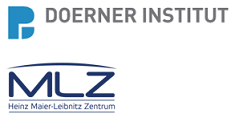Speaker
Description
In 2019, Operation Night Watch started at the Rijksmuseum in Amsterdam. A wide range of macro-, micro-, and nanoscale techniques were used to study this 17th-century masterpiece by Rembrandt van Rijn (1606-1669). One of Rembrandt’s most commonly used pigments in The Night Watch (1642) is smalt, a ground potash glass colored blue by cobalt (Co) ions.[1] In this synchrotron radiation-based study, we used a combination of nanoscale X-ray fluorescence (XRF) imaging and ptychography, both in tomographic mode[2], to visualize and assess samples from different paint mixtures containing smalt. The experiments were conducted at beamline P06, Petra III, DESY(Hamburg, Germany).
Three samples were studied, taken from Co-containing areas in the painting that have different tonalities and pigment composition (Figure 1a). Due to the irregular shape and variation in size of the smalt particles it is difficult to assess the amount of smalt in the paint samples based on 2D techniques such as light microscopy or SEM-EDX. The 3D investigation of the samples at high spatial resolution enabled us to count the smalt particles, as well as to study their shape and volume. The analysis of the spatial correlation of cobalt with other elements present in smalt (As, Ni, and Bi) provided information about the production process, which in turn allowed determination of whether Rembrandt had used different types of smalt in The Night Watch. Figure 1c shows the 3D distribution of Pb, Fe, Ca, Co, Cu, Ti, and K in one of the samples used to provide semi-quantitative information on the composition of the paint mixtures and the differences between the three smalt-containing samples. Ptychographic reconstruction enabled visualization of the entire paint sample, including the organic fraction and components containing only elements lighter than sulfur, such as glass (SiO2).
[1] L. Robinet, M. Spring, S. Pagès-Camagna, D. Vantelon, and N. Trcera, Anal. Chem. 83, 2011, 5145–5152.
[2] K.W. Bossers, et al., J. Am. Chem. Soc. 142, 2020, 3691−3695

